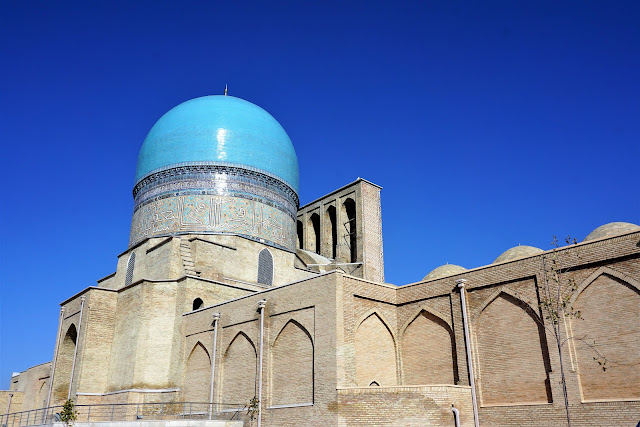As we finished our visit to Kok Bumbaz Mosque in Shahrisabz, Uzbekistan, in the distance we noticed two crumbling towers. They turned out to be our next destination.
This is what remains of Ak-Saray, the Mongol conqueror Timur's summer palace and a UNESCO World Heritage Site since 2000:
Of everything Timur built, Ak-Saray ("the White Palace") was planned to be the most magnificent. Construction began in about 1380 and took roughly 25 years to complete. According this this site, the exterior measurements of the entire palace are not known, but the main inner courtyard was about 400 x 800 feet. A football field is about 160 feet wide and 350 feet long, so the courtyard was bigger than four football fields! If the courtyard was that enormous, imagine the size of the entire palace!
The entrance gate, the only part still standing, once towered 230 feet (over 20 stories) and was a symbol of Timur's power. Our guide had a drawing of what experts thought it looked like. It must have been stunning.
























